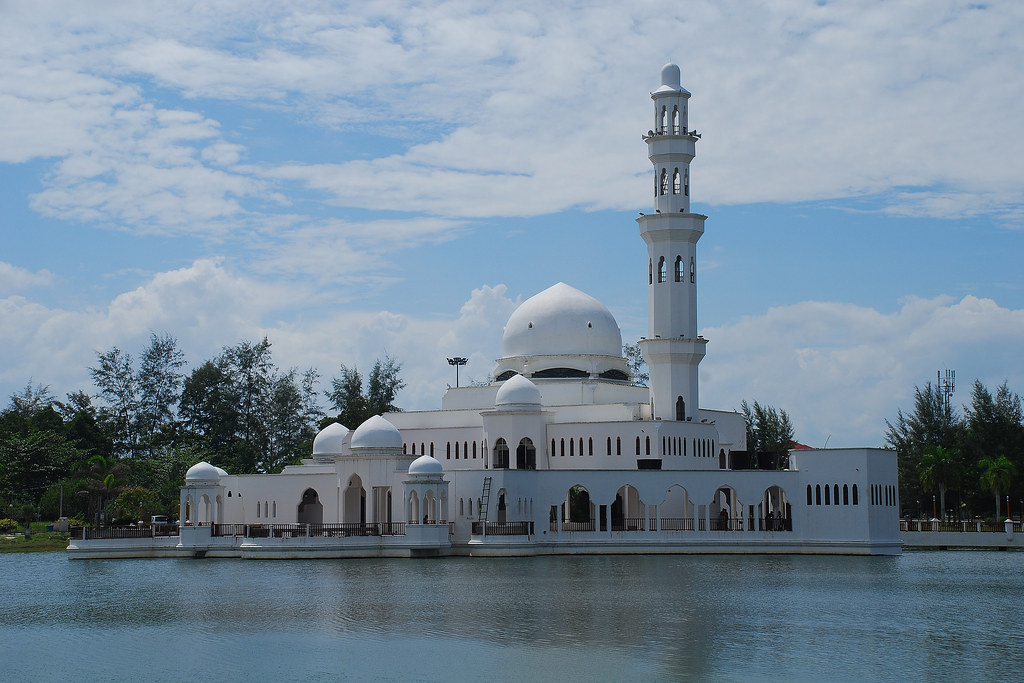The mosque was named after the mother of the Late Sultan of Terengganu Sultan Mahmud Al-Muktafi Billah Shah, the late Tengku Intan Zaharah binti late Tengku Setia DiRaja Tengku Omar.
The mosque, which began construction in September 1991 and was completed in mid-1994, worth RM6.997 million, managed by the Public Works Department, was designed by Dato’ Raja Kamarul Bahrin Shah Raja Ahmad, from Seni Bahri. This is the first floating mosque in Malaysia and the first floating mosque on a lagoon in Southeast Asia.
 The mosque combines modern and Moorish architecture; incorporating the use of marble, ceramics, mosaic works and bomanite paving. The mosque is linked via two bridges from the north and south sides of the public car park. The pristine white edifice of the mosque accommodates several facilities in its two- storeyed building, including the main prayer hall, female prayer gallery, royal lounge, mini library, Imam’s room, office, ablution areas and toilet facilities.
The mosque combines modern and Moorish architecture; incorporating the use of marble, ceramics, mosaic works and bomanite paving. The mosque is linked via two bridges from the north and south sides of the public car park. The pristine white edifice of the mosque accommodates several facilities in its two- storeyed building, including the main prayer hall, female prayer gallery, royal lounge, mini library, Imam’s room, office, ablution areas and toilet facilities.
 Many such traditional Middle-Eastern inspired design elements are embedded on the building elevation with an array of arches used as window openings and at the courtyard area. At the building facade, several projected bay-like windows are incorporated into the mosque facade. Smaller fenestrations are also arranged accordingly. Projected turrets which stand on its corner walls are used to cover the pavilions overlooking the river. The main prayer hall is sheathed in a white colour tone, formed by main columns flanking the hexagonal void under the main dome. The four front columns are decorated with attached panels, similar to mashrabiya wall panels. The qibla front wall is earmarked with a vaulted mihrab niche, with an intricate timber minbar platform located in the middle.
Many such traditional Middle-Eastern inspired design elements are embedded on the building elevation with an array of arches used as window openings and at the courtyard area. At the building facade, several projected bay-like windows are incorporated into the mosque facade. Smaller fenestrations are also arranged accordingly. Projected turrets which stand on its corner walls are used to cover the pavilions overlooking the river. The main prayer hall is sheathed in a white colour tone, formed by main columns flanking the hexagonal void under the main dome. The four front columns are decorated with attached panels, similar to mashrabiya wall panels. The qibla front wall is earmarked with a vaulted mihrab niche, with an intricate timber minbar platform located in the middle.
The white structure of the mosque covers an area of roughly 5 acres and can accommodate up to 2000 attendees at a time.
According to Wikipedia and mosqpedia.org













